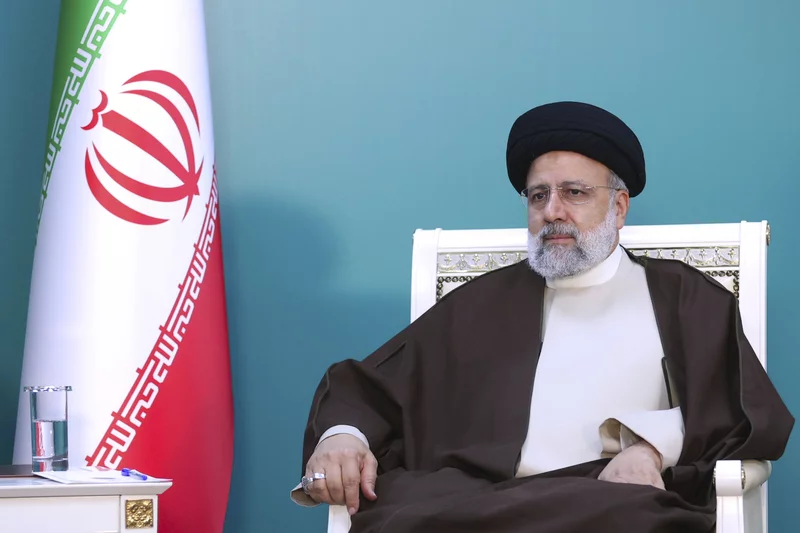Introduction
In a surprising and alarming event, the helicopter carrying Iran’s President went missing recently, sending shockwaves through the nation and drawing significant international attention. The incident has prompted a multifaceted response from Iranian authorities, stirred speculation globally, and highlighted potential security vulnerabilities within Iran’s presidential logistics. This article delves into the details of the incident, the immediate aftermath, the ongoing search and rescue efforts, and the broader implications for Iran’s political and security landscape.
Incident Overview
The helicopter carrying President Ebrahim Raisi was reported missing during a routine domestic flight intended for a provincial visit. This unexpected event occurred despite standard safety and communication protocols being in place, raising immediate concerns about both the safety of the President and the operational integrity of the helicopter fleet used for such high-profile missions.
Timeline of Events
- Departure and Flight Path: On the morning of the incident, the presidential helicopter departed from Tehran, headed towards a provincial destination. The exact flight path was disclosed as part of regular procedure, ensuring coordination with air traffic control and security forces.
- Communication Loss: Midway through the flight, the helicopter reportedly lost communication with ground control. This sudden loss of contact raised red flags and initiated emergency protocols, including attempts to re-establish communication and track the helicopter’s transponder signals.
- Disappearance: Despite these efforts, the helicopter did not reappear on radars, leading to an official declaration of a missing aircraft. The precise location where the helicopter lost contact is speculated to be over a remote and mountainous region, complicating immediate search efforts.
Immediate Response
Following the disappearance, Iran’s military and emergency response teams were mobilized swiftly. The following steps were taken:
- Search and Rescue Operations: Comprehensive search and rescue operations were launched, involving both air and ground units. The focus was initially on the last known coordinates and surrounding areas, utilizing helicopters, drones, and satellite imagery to cover the rugged terrain.
- International Assistance: Given the severity of the situation, Iran reached out for international assistance. Offers of help came from neighboring countries and beyond, with various nations offering advanced technology and expertise to aid in the search.
- Crisis Management: The Iranian government activated its crisis management protocols. An emergency task force was set up to oversee the search and provide continuous updates to the public and media, aiming to manage both the logistical challenges and the national anxiety surrounding the event.
Speculations and Theories
As with any high-profile disappearance, a range of speculations and theories emerged almost immediately:
- Technical Failure: One of the leading theories is that a severe technical malfunction caused the helicopter to crash. This possibility is being scrutinized by aviation experts, examining maintenance records and the history of the helicopter’s model.
- Adverse Weather Conditions: Iran’s diverse and often harsh climate means weather could have played a role. Sudden changes in weather, including high winds or fog, might have contributed to the helicopter’s disappearance.
- Security Breach: Given the president’s high profile, some speculated about a potential security breach or sabotage. This theory, though less likely, has not been ruled out and is under investigation by intelligence agencies.
- Pilot Error: Human error remains a possibility. The experience and health of the pilot are being reviewed as part of the broader investigation.
Impact on Iran’s Political Climate
The incident has significant implications for Iran’s political climate:
- Public Reaction: The Iranian public has responded with a mix of concern, hope, and skepticism. The government’s handling of the situation is under intense scrutiny, affecting public trust in its ability to ensure the safety of its leaders.
- Political Stability: The uncertainty surrounding the president’s fate has the potential to create a power vacuum or lead to internal political maneuvering. Key political figures and institutions are on high alert, ensuring continuity of governance amidst the crisis.
- Security Overhaul: This incident is likely to prompt a thorough review and potential overhaul of security protocols for high-profile officials. Enhanced measures may be implemented to prevent future occurrences.
International Reactions
Internationally, the incident has drawn various reactions:
- Diplomatic Concerns: Countries with significant diplomatic relations with Iran have expressed their concern and offered support. The incident has underscored the interconnectedness of global security and diplomacy.
- Media Coverage: The global media has extensively covered the disappearance, with continuous updates and analysis. This has brought international attention to Iran’s internal security mechanisms and political landscape.
- Geopolitical Implications: Given Iran’s strategic importance, any instability could have broader geopolitical repercussions. Neighboring countries and global powers are closely monitoring the situation for any signs of destabilization.
Conclusion
The disappearance of the helicopter carrying Iran’s President is a deeply unsettling event with far-reaching consequences. As search and rescue operations continue, the nation and the world watch with bated breath. The incident not only tests the resilience and efficiency of Iran’s crisis response mechanisms but also highlights the vulnerabilities inherent in political and security structures. Regardless of the outcome, this event will likely lead to significant changes in how Iran approaches the safety and security of its highest officials, potentially influencing broader regional stability.
